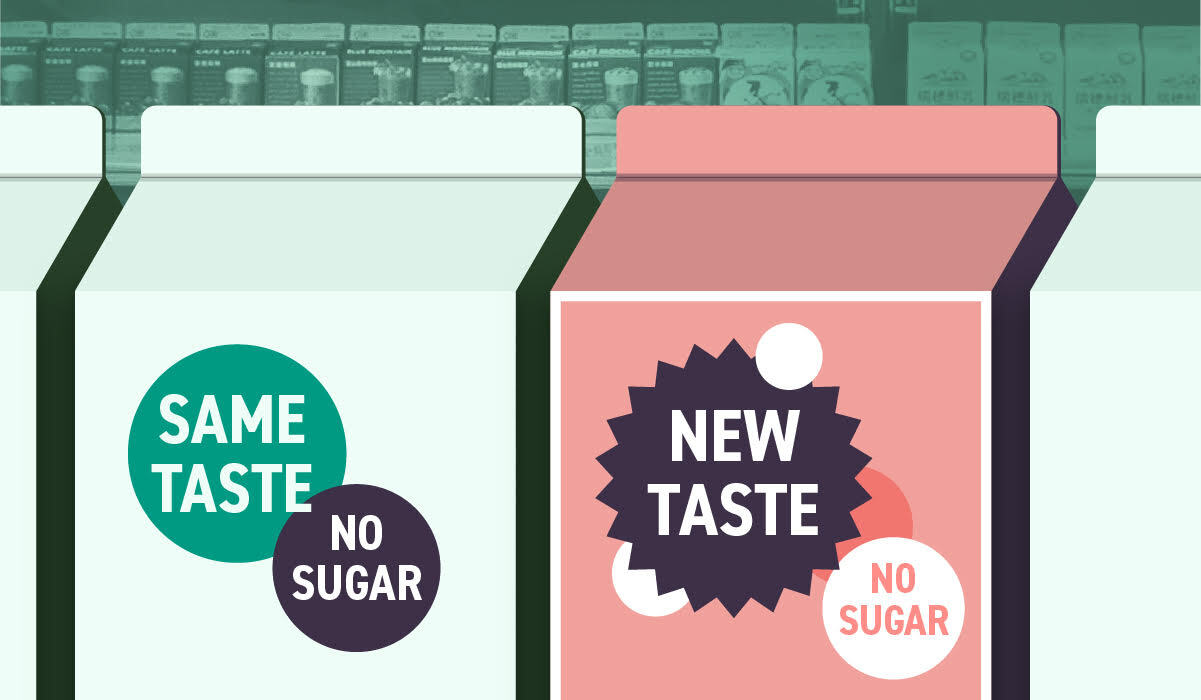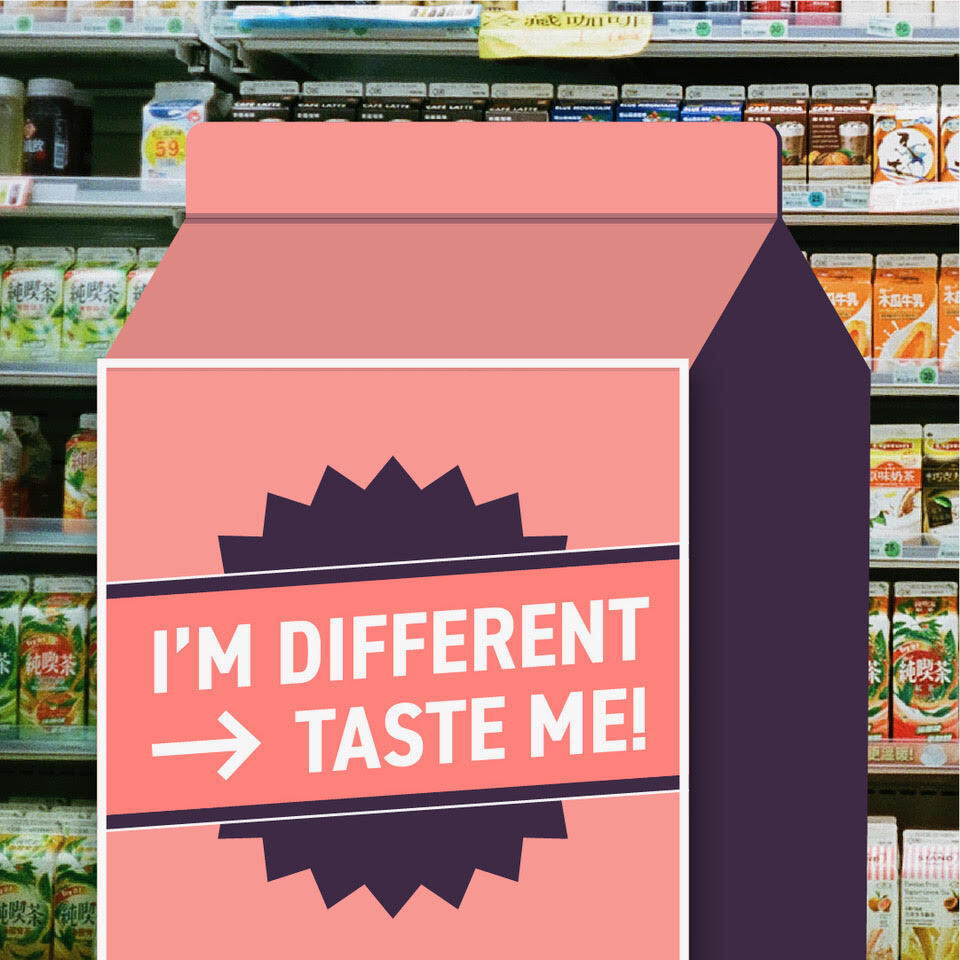Why category-disrupting products and packaging propositions should embrace their differences
You’ve seen them all. The ‘zero’ versions. The vegetarian or plant-based alternatives. The organic options. The products that claim to be better for the body, the environment, or both.
You’d think the above USPs make for strong differentiators that could make these products stand out in its category. Yet, with slogans such as “same taste, no sugar”, “the impossible meat”, and “try it and don’t taste the difference,” we see that too often, these products end up imitating the very products they’re hoping to replace. They’re defined by what they are not, instead of by their own unique qualities.
And that’s a shame, because being different is a strength. In fact, it’s the best thing you can be. Especially now.

Consumers are more adventurous than ever.
Over the past few years, many consumers have opened their minds to new tastes and textures. Flexitarianism is on the rise everywhere. People are looking for their old favourites, with a healthier or planet-friendlier twist. Comparable taste is no longer their main concern. Sure, they might taste the difference between a medium rare steak and a plant-based replacement. Or between regular or organic bread. So, what?
Celebrate your difference. Embrace your uniqueness. You’re contributing to the new generation of food, milk, or whatever it is you’re reinventing. You don’t need to do what has already been done—you need to convince consumers you’re doing it better.
And isn’t that what business is about?
Emphasising the unique qualities of your product might help you convince new consumers and establish a premium positioning. As many brand equity models have proven, being perceived as a trendsetter or having a distinctive asset is crucial when building sustainable brands. And when that asset is product-related, your impact becomes even more substantial. Think about it. What do Tony’s Chocolonely, the Vegetarian Butcher, and Alpro Not-Milk have in common? Well, they each represent the strongest products in their category. And regardless of your marketing or business efforts, a superior product remains the main driver for long-term business.

What about packaging, then?
Well, it’s a similar story. We know that printing on recycled paper doesn’t have the same effect as working with brand-new material. And a plastic wrapper might pop out of the shelf more than your sustainable cardboard ever could.
But if you use the right claim and tell the right story, those things become irrelevant. Educate your consumers. You make a stronger difference when you lead the way. And that’s simply what the new generation of consumers has come to expect.
Conclusion? Don’t try to be what you’re not.
That’s really what it all boils down to. Of course, you can relate to existing products. Take their cues. Get inspired by what they’ve spent years building. But celebrate the colour, texture, ABV, or functional benefit unique to your product. Help consumers understand why they should be choosing you. Why you’re not like the others. That’s the key to success.
